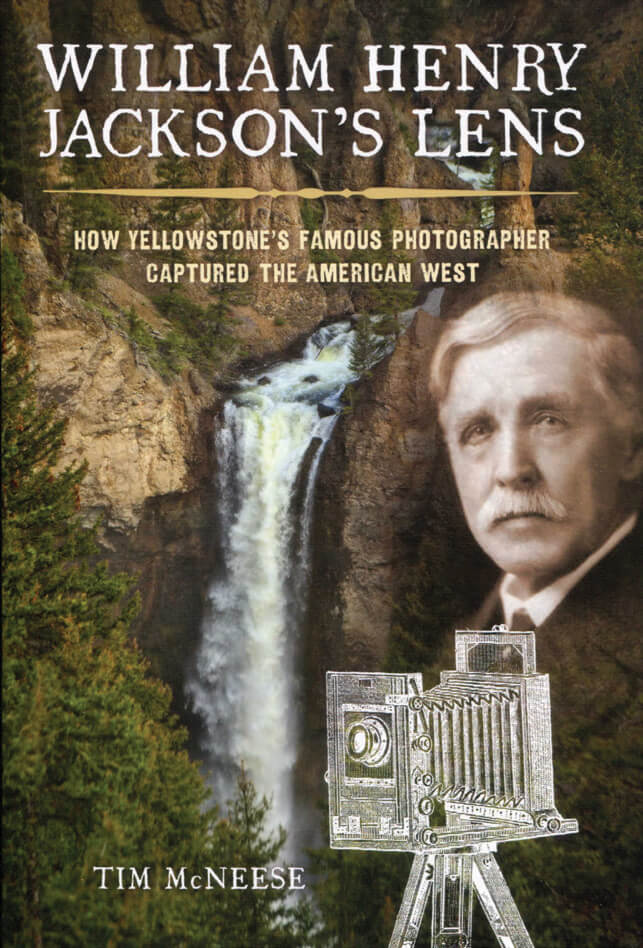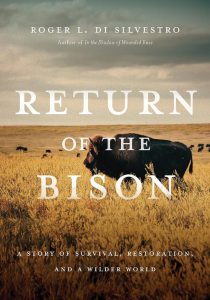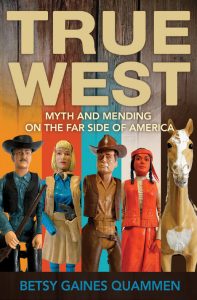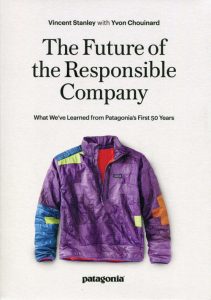
24 Nov Books: Reading the West
The man behind numerous iconic images of the Rocky Mountain’s stunning natural features comes into full focus in Tim McNeese’s William Henry Jackson’s Lens: How Yellowstone’s Famous Photographer Captured the American West (TwoDot, $31.95). Jackson’s role in swaying Congress to establish our first national park is well known: His photographs documenting the otherworldly geysers, hot springs, and fumaroles, as well as the breathtaking waterfalls and canyons, as part of the 1871 Hayden Geological Survey finally — after several verbal accounts had been discounted and derided — provided indisputable evidence that Yellowstone was indeed the wonderland it was rumored to be.
However, Jackson’s life leading to the Hayden expedition proves just as fascinating and astonishing as the photos for which he is best known. McNeese describes Jackson as a teenage artist sketching his way through the Civil War; as a young runaway, penniless and love-jilted, wandering far-flung cities like Detroit, Chicago, and St. Joseph, Missouri; as a bullwhacker driving ox-drawn wagons on the Oregon Trail; as a cowboy herding wild horses from California to Nebraska; as an adventurer, explorer, train rider, and dreamer longing to fully know the wild lands of the American West. On all his journeys and expeditions, the common denominator is his constant rendering of thrilling sights into sketches, paintings, and photographs.
These youthful adventures, in the skillful delineation of McNeese, read like an adventure novel reminiscent of Guthrie’s The Big Sky or McMurtry’s Lonesome Dove. Yet, at the same time, a plethora of factual details, journal entries, and well-documented citations remind us that this is no invented tale. The life and times of this important artist are illustrated with lucidity and thoroughness.
Once in the Yellowstone plateau as part of the 1871 survey, Jackson rose to his full historic import. His documentation of the region’s features, along with Thomas Moran’s paintings and Ferdinand Hayden’s scientific studies — building on the accomplishments of the earlier Washburn-Langford-Doane Expedition — proved instrumental in convincing Washington politicos to establish protections for this special place.
Lovers of Yellowstone, and indeed the very idea of national parks, owe a great debt to William Jackson. By the same token, we now owe a debt of gratitude to Tim McNeese for giving us a William Jackson we can intimately know and appreciate.
Of Note:

Roger L. Di Silvestro weaves a tale of hope, or at least cautious optimism, in Return of the Bison: A Story of Survival, Restoration, and a Wilder World (Mountaineers Books, $19.95). Picking up where most bison narratives leave off — namely, with the concerted effort to exterminate the great beast, leading to less than two dozen remaining in the remotest reaches of Yellowstone National Park — Return of the Bison details the cultural, scientific, and political advancements that have brought this Western icon back from the brink of extinction. Though often seemingly a process of one step forward, two steps back, the work of bison restoration offers many examples of success. Yet, as Di Silvestro points out, there is still much work to be done to restore the bison to even a fraction of its native habitat, and time and again, it is merely human intolerance standing in the way.

True West: Myth and Mending on the Far Side of America (Torrey House Press, $26.95) by Betsy Gaines Quammen is a solid follow-up to her debut offering, American Zion: Cliven Bundy, God & Public Lands in the West. Here, she broadens her view to consider the Western myths that reside at the heart of the region: “belief in ceaseless expansion, American individualism, unending abundance, and unbridled liberty.” She traces how these myths too often result in the ills that currently plague the struggling communities in Western states, from anti-science religious fundamentalism to racist, gun-toting nationalism to unfettered growth and resource depletion to a fearful hatred of native wildlife — especially wolves — all of which have been exasperated by the COVID pandemic.
Gaines Quammen brings these big themes down to a personal level, interviewing people from all sides of the spectrum with generous open-mindedness and journalistic, even scientific, integrity. She digs through the typical talking points and heated us-them dichotomies to arrive at the bedrock below — one of founding myths that, perhaps more so than in any other part of the country, drive the region’s prevailing narratives and overriding belief systems.

The Future of the Responsible Company: What We’ve Learned from Patagonia’s First 50 Years (Patagonia, $22), by Vincent Stanley with Yvon Chouinard, makes a strong case for a different way of doing business in this imperiled world of environmental calamity. From its ragtag origins of selling handmade climbing gear to making history in 2022 by devoting all profits to combatting the climate crisis, Patagonia has long championed a philosophy of stewardship. This book offers a blueprint for how this vital work can, and should, be done.

Drawing together some of the Northwest’s most engaging poets, artists, and naturalists, Cascadia Field Guide: Art, Ecology, Poetry (Mountaineers Books, $29.95) creates a new way of understanding place: part scientific treatise, part spiritual meditation, part artistic and literary communion, and all of the parts fitting together like an ecological web as rich and varied as the land it celebrates. The book’s editors — Elizabeth Bradfield, CMarie Fuhrman, and Derek Sheffield — have crafted a delightfully readable, visually stunning, and heart-stirring volume that becomes an ecosystem of its own, with myriad voices chorusing together to offer a song of praise to the flora and fauna of one of our most ecologically diverse regions. It’s a field guide to the soul, as well as a geographic region.
Marc Beaudin is a poet, theater artist, and bookseller based in Livingston, Montana. He has contributed to numerous publications, written two books — Life List: Poems and Vagabond Song: Neo-Haibun from the Peregrine Journals — and his work has been included in anthologies dedicated to environmental and social justice.




No Comments